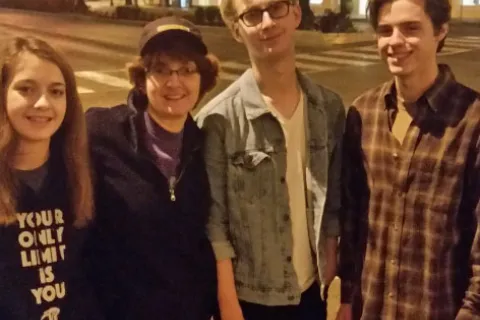Expert Q&A: Planning for the future
By Marta ChmielowiczDr. Tamar Heller is a distinguished professor and head of the Department of Disability and Human Development at the University of Illinois at Chicago. Her research focuses on policies and practices to support people with disabilities and their families across the life span.
When I’m gone, what will happen to my child with autism?
For many families of autistic loved ones, this thought is never far from mind. A great deal of people with autism require ongoing support throughout their lives, bringing up worries about what will happen when their parents or caregivers are no longer able to provide for them. Planning for the future is critical to making sure autistic individuals receive the care they need, no matter the circumstances.
Dr. Tamar Heller, distinguished professor at the University of Illinois at Chicago, has made future planning the focus on her work. She and her colleagues developed The Future is Now training curriculum, a program for people with intellectual and developmental disabilities and their families that gives them the information and skills they need to prepare for the future—together. Her program is both family- and person-centered, meaning both the needs of the autistic person and their family members are taken into consideration.
While the virtual program is still being developed, Dr. Heller shares some key lessons in this Q&A.
What advice would you give to families that are just starting the process of transition planning?
First, it's important to figure out what the autistic person really wants, especially if they are a young adult. That’s not always an easy thing. Sometimes, people don’t know or can’t easily communicate what they want. In these cases, it’s important to get them involved in some informational activities, like visiting residential programs. Even if they can’t communicate verbally, you can observe their reactions and behaviors during these visits. Then, you can balance their desires with what the rest of the family wants and needs.
When you’re going through this process, the most important thing is to get educated about the resources that are out there. Meeting with care coordination units in your community can be a big help in finding formal support services in your state. Autism services vary a lot by locale, so your state, financial resources and location in a rural or urban area can make a big difference in terms of what you’re able to access. Care coordination units can connect you with residential supports and make you aware of any other opportunities available in your state. Speaking with other autistic people and families can also inform you about different options by showing you what others have been able to do formally and informally.
What can families do if there are limited resources for autistic adults in their area?
You might find that the resources available are insufficient for the personal needs of the autistic person in your family. This has led many families to look at alternative strategies. That might mean getting involved with advocacy or banding together with other families to come up with creative solutions. For example, some families buy a house together to make an intentional community and share costs. There’s an example of this in Chicago.
Try to encourage the autistic person to go out and get involved in some community activities. A lot of families tell me that they have a hard time getting their child out of the house. It can be a challenge, but find something that the person enjoys getting involved with. This will prevent them from becoming socially isolated and will take some pressure off families.
There are also informal ways to help the person with autism find employment. Some families help the autistic person start their own business. Others reach out to the people they know to help their loved one find a job.
Can you tell me about The Future Is Now training?
Our program matches families with peer trainers who can relate to their situation and are trained in future planning. People with disabilities are matched with trainers with disabilities, while parents and siblings are matched with parent and sibling trainers. We do some sessions together and some sessions separately so that all family members can be honest and speak openly.
One of the main goals of the program is writing a letter of intent that describes the autistic person’s desired future living arrangement, community role and lifestyle preferences, and the available resources, needed supports and action steps to achieve those goals. It’s really about understanding the desires of the person with a disability and taking a problem-solving approach to plan for their future in the context of the family.
We had in-person sessions in the past, but we’re going to be piloting a virtual version of this program in the Fall. For now, you can view many resources that we’ve helped develop through The Arc’s Center for Future Planning.
What are some of the outcomes of The Future is Now program?
For many families, planning for the future is extremely anxiety provoking. And we find that through this training, families actually worry less because they have a plan in writing. What really amazes me is that families also report less caregiving burden because they’re less worried about the future. And in terms of the people with disabilities, they are more likely to do the activities they like and live the life they want.
Learn more:
- Access information and resources to help you plan for your loved one’s future at The Arc’s Center for Future Planning
- Learn more about The Future is Now training program
- Watch Dr. Heller discuss the life-long impact of caring for a family member with autism at the Autism Speaks Thought Leadership Summit on Autism and Aging below.








